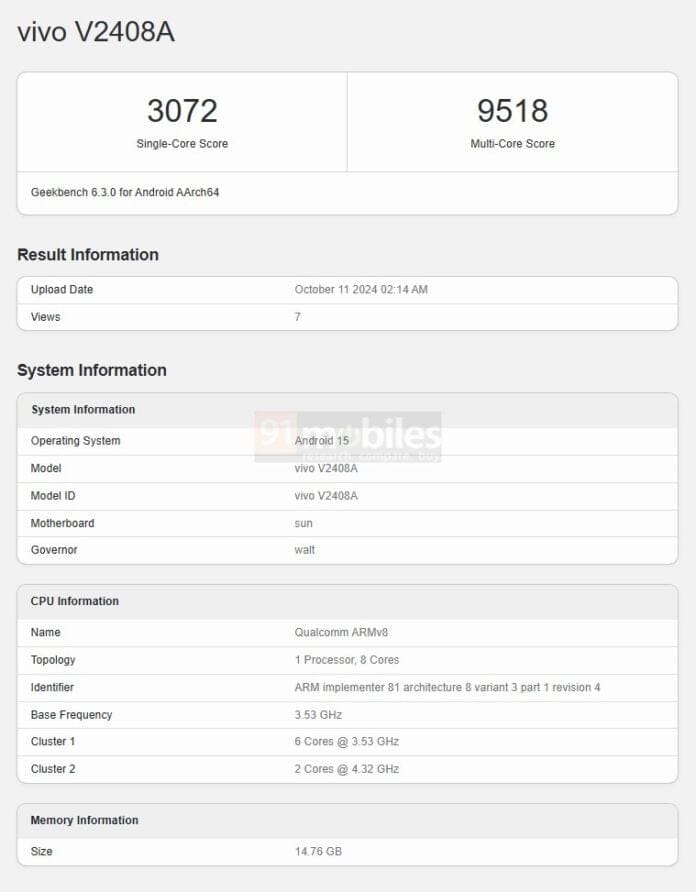iQOO 13 is set to be launched at the end of October, likely shortly after the introduction of the Snapdragon 8 Gen 4 processor. The company has shared some details about the smartphone, showcasing its design, display attributes, and the addition of the Supercomputing Chip Q2 that operates alongside the main processor in specific situations.
Geekbench Performance Scores
Recently, the device was listed on Geekbench with impressive single-core and multi-core scores of 3072 and 9518, respectively. When compared to the leaked Geekbench score of the Galaxy S25 Ultra from a few days ago, the single-core result is nearly the same, but the multi-core score surpasses it—the S25 Ultra managed to score 9080 points. It’s important to note that the S25 Ultra utilizes an overclocked "For Galaxy" version of the chipset. The enhanced performance showcases the efficiency of the redesigned heat dissipation system in the iQOO 13, which a company representative mentioned earlier.
Snapdragon 8 Gen 4 Specifications
The Geekbench listing also validates the speculated 6+2 core configuration, where the two cores are aimed at enhancing performance. As per the listing, all six efficiency cores achieve a clock speed of 3.53GHz, while the performance cores can reach up to 4.3GHz, which is a notable increase from the previous model. Regarding gaming capabilities, earlier rumors suggested that the chipset could offer up to a 56% boost in GPU performance compared to its predecessor.
Nevertheless, even though the new chipset presents a revised core architecture, it’s premature to assess its power efficiency based solely on the more efficient 3nm process node. It’s also essential to highlight that the device is equipped with a large 6,150mAh battery, which is an upgrade from the iQOO 12’s 5,000mAh, allowing for a significantly extended battery life. This comes alongside support for 100W PD/PPS charging.
Display and Software Features
On the front, the iQOO 13 sports a 6.7-inch 2K AMOLED display that incorporates BOE’s latest luminescent material, promising enhanced brightness and more precise color representation. For the software experience, users will engage with Vivo’s Android 15-based OriginOS 5 interface, which provides smoother animations, a more practical ‘Atomic Island,’ and Vivo’s self-developed AI assistant.



Leave a Reply